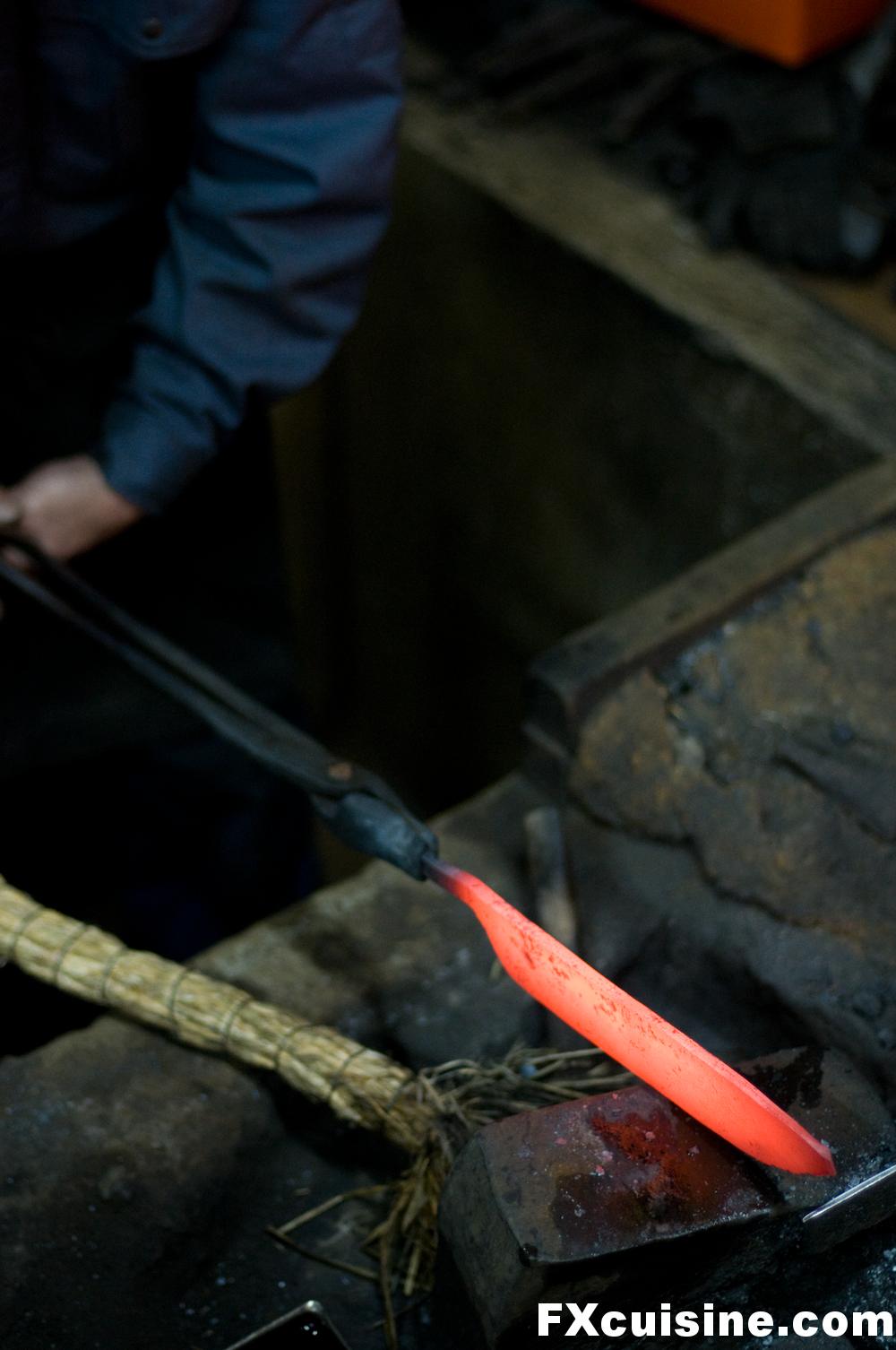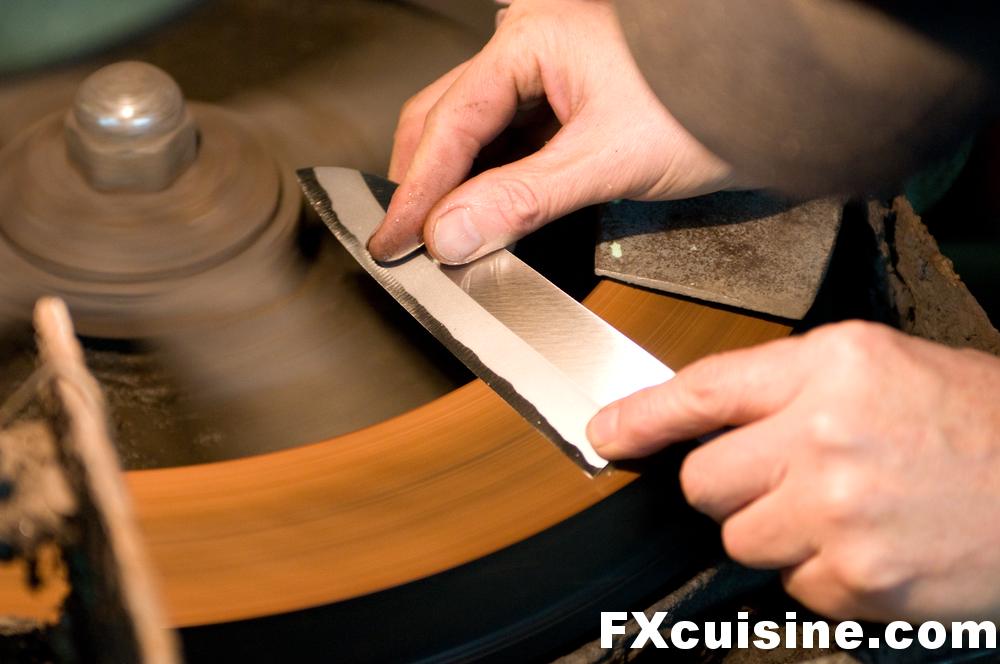I love this sort of thing… bit of a language warning. But here are the first two videos in a series.
Tag: knives
Food fun from around the interwebs…
Rather than posting all of these separately, here are some food related stories I currently have in my queue of stuff to blog.
Peel garlic in 10 seconds
I want to try this. It’s amazing.
How to Peel a Head of Garlic in Less Than 10 Seconds from SAVEUR.com on Vimeo.
Make your own marshmallows
Serious Eats has a quick run down on making marshmallows.
I had no idea it was this easy. I probably should have. I know plenty of people who have made marshmallows – but the home made version has never really struck me as being as good for toasting, or putting in hot chocolate.
Make a biscuit bowl
This has been doing the rounds – but it seems so much smarter than trying to make a bowl in the inside side of a muffin tray…

Wilton.com has a recipe for biscuit bowl success.
Cheeseburgers at home
Maybe it was self discipline, maybe I just forgot – but I didn’t take advantage of the amazing $1 cheeseburger happy hour deal that McDonalds was running as a birthday celebration.

Lifehacker tried to figure out how much it would cost to make a cheeseburger at home. They calculated the cost at $1.38. That’s a cheap lunch.
Some “Babushka” knives
These don’t just look cool – they’re conceptually cool in their use of Fibonacci ratios.



Details on Design Sojourn. You can buy ’em for millions (well, hundreds) on Amazon.com
.
Put the chop back in your chop suey
Or at least in your San Choy Bow… with the karate chopper lettuce buster thing.

How Japanese knives are made
If I were to become rich and famous I would buy nice watches and nice knives. You can take your nice cars and put them in your nice garages… knives and watches. Cutting stuff into paper thin pieces and telling the time while looking classy. That’s what my life as a rich person would look like.
I’m not likely to become either, so I’ll settle for the cheapo knock-off fob watch that I bought in the Turkish Bazaar this week, and my Thai Kiwi knives bought over the internet for $7 a pop.
But Japanese knives are the cutting edge of knife technology. And this article shows how they’re made. In pictures.

“A piece of hard steel will provide the razor-sharp edge Sakai’s knives are famous for, and a piece of soft ferrite, containing more carbon, will prevent the knife from breaking. A combination not unlike reinforced concrete, where the concrete provides resistance to compression while the iron grid prevents the material from breaking when pulled.”

Knives made this way retail for $400 Euros a pop.
How not to cut yourself with sharp knives
I love reading professionals giving tips for everyday living. This interview with a butcher is fascinating. He gives five tips (in detail) that I’ll summarise here on how not to cut yourself.
- Keep the knife in your hand
“You should hold your knife like the butt of a pistol, fingers wrapped tightly around the grip “like someone was trying to take it away from you.” Some people hold a boning knife like a conductor’s baton during a particularly slow part of Pachelbel’s Canon. This is wrong. You will either drop your knife through your fingers, causing you to cut your knife hand with your knife, or, more likely, lose track of it in your brain’s motor control center and cut the hand holding the meat.”
- Don’t cut towards yourself
Putting all your strength into a brazen “take it to the board” type of cut is a sure way to bury a knife in your chest, belly, femoral artery or … genitals. We’re not talking stitches here, we’re talking surgery at best and coffin at worst.
- Keep everything clean.
We take care to avoid fat buildup on our knife handles to prevent what I like to call “the knife handshake,” which consists of having your lubricated fist slip over the grip and onto the length of the blade. Wash your hands. Wash your knives. Thoroughly. Often.
- Do not leave knives on the table, ever.
This applies mainly in a butcher shop. The reason we wear somewhat garish knife scabbards on our hips is to avoid ever setting a knife on the table. Why? Our pieces of meat are large and heavy, and knives can be well hidden. Add force and weight, and you can imagine what might happen to your hand or forearm. Gross.
- Bones can be really sharp.
Bones, particularly the chine and feather bones along the spinal column, become extremely sharp and dangerous when cut by a carcass splitter.
Speaking of knives – I’ve been looking for an opportunity to plug a bunch of knives I bought online recently that have turned out to be incredibly awesome and very sharp. They’re also cheap. They are Thai restaurant style chef’s knives and cleavers and they’re the sharpest knives I’ve ever played with (not that playing with knives is a good idea).
Caveman origins
It’s somewhat fitting that I write a post about caveman tools while watching Queensland play Origin.
There’s a resurgence of "simple" designs – and it doesn’t get much simpler than the caveman… here are two kitchen implements, designed by different people, that are based on life in a cave kitchen.

You can buy that pestle thing here.
You can’t buy these knives yet, but the guy who designed them can be found here.

I found it at dezeen.com.
Giant tool
That’s what I’d call anyone who carries this Swiss Army Knife featuring 110 “tools”. It doesn’t even fit in your pocket. Pretty much missing the whole “pocket knife” concept. I suspect you have to put the knife on the ground and throw whatever you want to chop at the blade.

Knives out…

Fancy yourself as the King Arthur of the kitchen – then these wall hooks from A+R will help solidify that claim – they should be a breeze to pull out too.